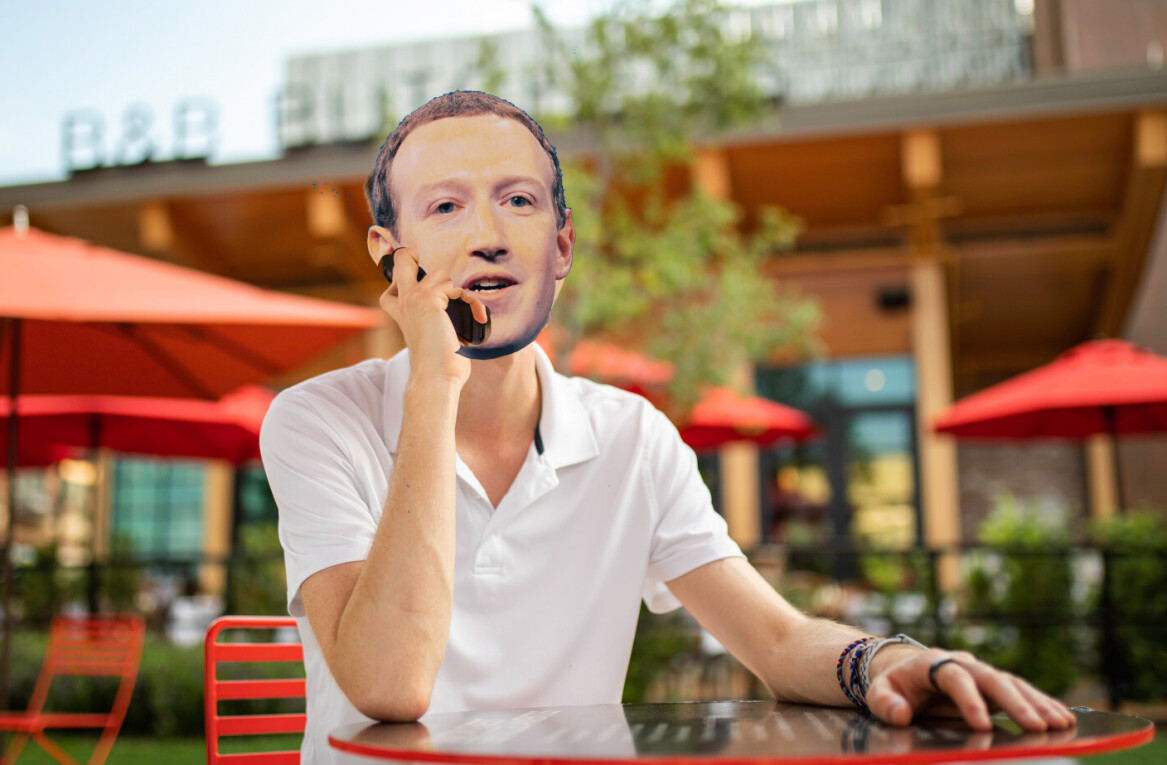
During the last ten years we have witnessed the growth and flourishing of ad tech. Since then, many good things have been said about the roaring success of industry giants. Now it’s time to unveil their fails and learn our lessons.
We live in the heyday of recently-born advertising technology. Ads served automatically grew from 0 to 30 million impressions per day. And that’s only within Google Ads network — imagine the combined numbers coming from hundreds of other ad networks and demand-side platforms.
Every year something great happened. Real-time bidding grew from the method to sell remnant technology to the fastest way of buying high-quality traffic from trusted websites. Google, Facebook, and Amazon rose to their indisputable prominence. GDPR kicked in, and now customer’s privacy is valued over everything else. We switched to first-price auctions, and many more changes that gave a solid boost to brands that applied them wisely happened within these ten years.
What has been often neglected in ad tech talks are the epic failures that led some companies to collapse. At the dawn of the new decade, let’s review the most common mistakes made by ad tech brands to avoid repeating them in the future.
1. Inability to adapt
Unwillingness to change and lack of innovation are the primary reasons why once-great businesses failed, and not only in ad tech. No single company defines the market. It is the customer who defines the market, so even the trendsetters have to pivot on the fly.
In 2020, brands that ignore the importance of first-party data, personalization, audio programmatic, and wearables put themselves at risk. No client is loyal to the extent that they’ll stick to your services no matter how outdated they are.
Or, it might happen that your innovations were rolled out to a market that isn’t ready for them yet. An example of the wrong timing is the case of Videology.
The company started as a pioneering ad tech startup focused on video advertising when it was only in the bud. It quickly partnered with large ad buyer GroupM and made a bet on the ad network business model.
This, however, appeared to be a bad call in the long run, as the advertisers craved more control over their ad campaigns and began massively switching to self-serve platforms. At the same time, Videology was fixated on the GroupM partnership, which was preventing them from other collaborations.
Videology growth has stalled. They decided to lean into building tools for programmatic TV, which still hasn’t taken off yet. Nobody needed advanced TV advertising tools in 2016, and frankly speaking, few advertisers need them today.
The rest of the existing problems of Videology were linked to the mounting Google and Facebook duopoly. Google disallowed third-party companies from purchasing video ads on Youtube. Facebook flooded the market of short video commercials by acquiring Instagram and launching ads in stories.
We’re all suffering from the duopoly dominance. But there are still many ways to be a successful video advertising company — from building a self-serve video ad platform to launching outstream video ad formats. The question is whether you are ready to mobilize and adapt or not.
2. Scaling-up too fast
Despite its dire end, there is one thing that Videology did right. The brand focused on one single channel: video advertising.
Many young ad tech companies do the opposite. After reaping the fruits of their early achievements, they begin actively expanding and then launch new services under their brand name. They may start from video, but later they burst into other industry segments like mobile or even data management.
Such extra moves may or may not lead to extra success. But generally, the more streams of revenue you try to embrace, the more the risk that you won’t handle them all and back down.
In 2018, OpenX laid off over 100 employees and shut down its ad server. Instead, the company workforce focused on upgrading video and programmatic solutions.
An OpenX representative said: “We are now operating from a more streamlined organizational structure to enable us to continue to succeed in the market.” And indeed; now the company feels just fine, helping clients to increase their programmatic revenue through OpenX Exchange by 49% in 2019.
The key takeaway from this case: If you feel that your business model is becoming too fragmented, refrain from further scaling up.
3. Wrong acquisitions
Have you ever noticed how people place tall and awkward structures in front of the buildings of historical significance? Take Altolusso, a residential skyscraper in Cardiff, placed behind the once-majestic Victorian facade of Cardiff Gas Light and Coke Co. facility, Bute Terrace. Instead of being demolished, Bute Terrace was turned into a joke intended to be a beautiful architectural ensemble.
That’s what I’d compare to “wrong acquisition.” Something attractive and seemingly profitable, but in fact it is destructive to your company image.

The ad tech industry is replete with acquisitions. Recently, Roku acquired Dataxu for $150 million. Salesforce acquired Datorama for $800 million. Sizmek acquired Rocket Fuel for $125.5 million. And while the first two deals were successful, the latter one turned out to be fatal for Sizmek.
Earlier this year, Sizmek met the fate of Videology and filed for bankruptcy. Experts named their acquisition of Rocket Fuel as one of the reasons. Rocket Fuel provided outdated and insecure Javascript pixels that slowed down pages and left them exposed to data theft. Even more, the DMP is notorious for selling data to third parties without user consent and pooling data from their clients’ remarketing campaigns.
Although this is not the root of Sizmek’s decline, this acquisition caused evident damage to their revenue. On the one hand, Rocket Fuel had powerful AI algorithms for data collection. But on the other — is it worth it to trade your own image for algorithms? Barely, at least for such a household name as Sizmek.
4. Lack of differentiation
The ad tech industry has one more global problem: The market is quite homogeneous. DSPs, DMPs, ad servers, and other advertising software share similar features and similar approaches to client treatment. They fail to make a difference.
If you go to the site of any ad tech company, you’ll see they all offer the same package in a different wrapping. Targeting, data collection, reporting, and the rest of the algorithms seem to work in nearly an identical way, with the only difference in traffic and inventory they provide. This mistake may cost not only Sizmek’s life but the lives of dozens in ad tech.
5. Partnerships with fraudulent DSPs
Worse than wrong acquisitions is unfortunate partnerships. Aside from running into another black box, you have zero control over your partner’s intentions. The global problem here is that along with the well-established players, there are promising new names whom you might like to collaborate with, especially if you’re also a startup.
Before rushing into this, you’ll have to weed out the wolves from the herd. Plunge into the ad tech environment, study each prominent and not so prominent name, and read credible sources of ad tech news. Fraudulent companies may disguise themselves as well-known brands in the industry, so knowledge is power here.
One of the recent fraud cases is Amobi Inc., which sounds suspiciously like the Amobee advertising platform. The difference is easy to overlook for an untrained eye, and Amobi took advantage of it, using a fake LinkedIn account and Amobee brand colors for their website.
Amobi Inc. got a chance to put their ads within PubMatic and OpenX networks before the programmatic audit company Ad Lightning detected the malicious nature of their creatives. The DSP distributed the Claritin ad, which was infected with malware and seeded it on hundreds of publisher’s websites before being eliminated.
Neither PubMatic nor OpenX were partnered with Amobi, but it’s indeed a possibility for starters. Newer ad tech brands may get caught in the trap of “premium traffic” and other tales usually told by fraudulent DSPs.
The quick fix is partnering with third-party verification services like Ad Lightning, which will identify the threat and root it out relatively quick. However, fraud is an undying issue in ad tech — staying wide awake still won’t guarantee you total defeat of this enemy.
6. Use of DMPs with declining cost-efficiency
Once-robust, the DMP (data management platform) sector of ad tech demonstrates some turbulence in recent times. 56% of marketers consider switching their DMP provider. 44% of them assessing this as a somewhat likely decision, and 12% — most likely, according to the Advertiser Perceptions report. 20% point out high cost as a primary factor for switching; 12% say that hidden pricing and lack of transparency have led to this.
This all means only one thing: DMPs are off their game. Marketers no longer see them as cost-effective data solutions. Features offered at exorbitant costs and separately from the demand-side platforms are labeled overspending.
Marketers are starting to move toward hybrid platforms that combine features of both DSP and DMP in a single interface. In 2019, 51% of advertisers were going to choose a hybrid solution over a pure DMP compared to 41% in 2018. This trend is predicted to gain momentum in 2020, so the overwhelming majority of marketers will likely flee towards hybrid DMPs.
If you’re an ad tech brand and plan to build a DMP, consider making a hybrid one, which is a much more viable product now than a pure DMP in a new decade. If you’re an advertiser or an ad network, don’t repeat the mistake of previous generations and be extra careful with your DMP spending.
Wrapping up
Now, the giant, complex, and unbreakable ad tech rocket is hurtling through space at the speed of light. We should remember; this rocket fits all of us, small and big ad tech brands, media buyers, publishers, and others involved in advertising. And as I mentioned at the very start, it’s driven by our customers.
The primary lesson to learn at first light of the 2020s is to listen to your clients. Fake trends pop up and sink, while true trends lie in the words of your customers. Implement what’s right to your audience, and you’ll stay afloat. The worst mistake any brand in ad tech can make is to pursue revenue over customer satisfaction.
Get the TNW newsletter
Get the most important tech news in your inbox each week.





